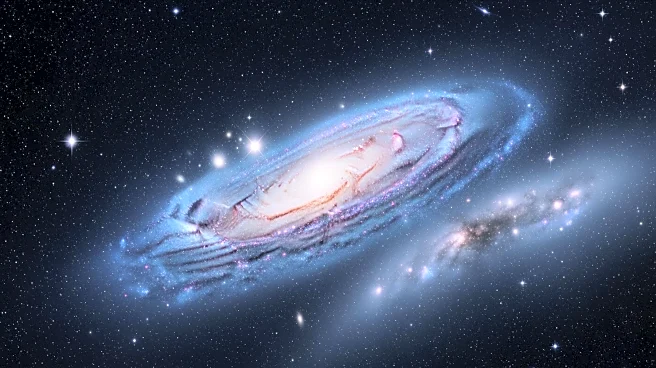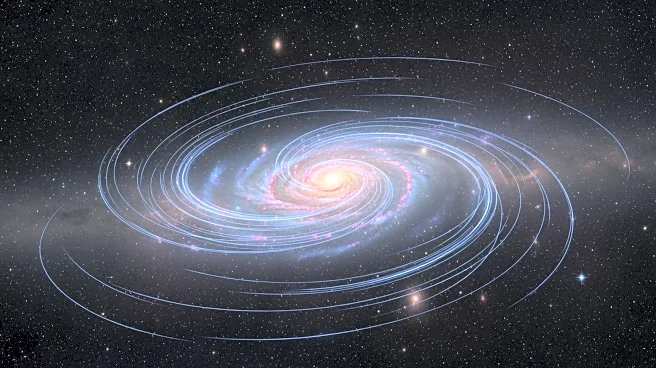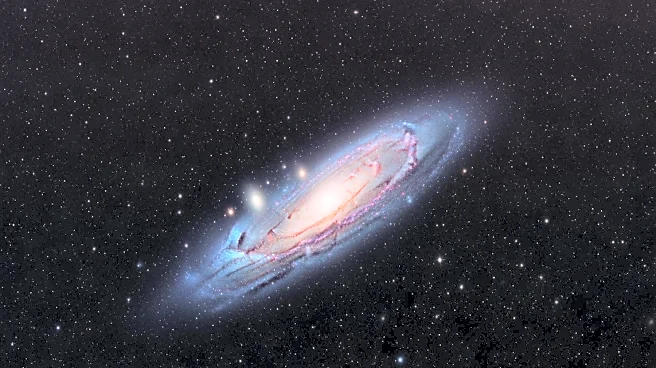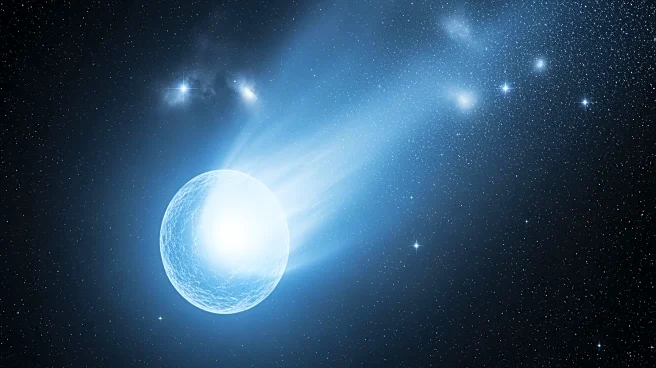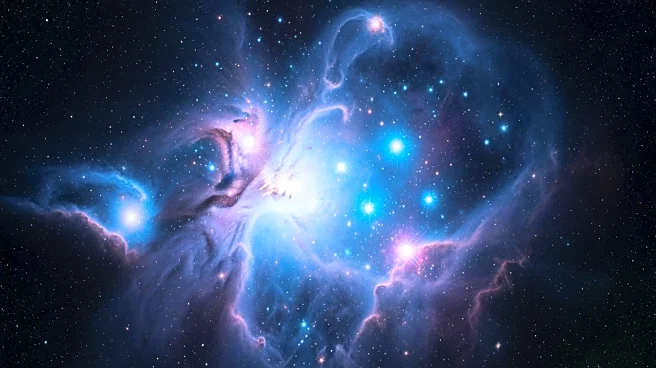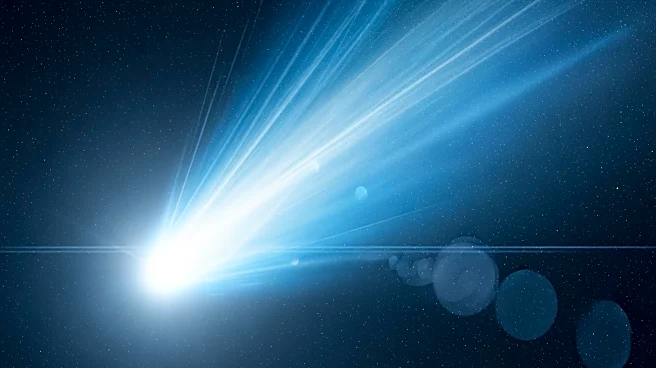What's Happening?
The Hubble Space Telescope has captured a new image of the galaxy NGC 2775, which presents a challenge for astronomers due to its ambiguous classification. Located 67 million light-years away in the constellation
Cancer, NGC 2775 features a smooth, gas-free center typical of elliptical galaxies, alongside a dusty ring with patchy star clusters reminiscent of spiral galaxies. This duality raises questions about whether NGC 2775 is a spiral, elliptical, or lenticular galaxy. Lenticular galaxies, which share traits with both spiral and elliptical galaxies, might form through various processes, such as mergers with other galaxies or depletion of star-forming gas. Evidence suggests NGC 2775 may have merged with other galaxies in the past, as indicated by a tail of hydrogen gas extending nearly 100,000 light-years around it. The latest Hubble image includes observations of red light emitted by hydrogen gas clouds surrounding young stars, aiding astronomers in pinpointing star formation areas within the galaxy.
Why It's Important?
The study of NGC 2775 provides valuable insights into galaxy formation and evolution, particularly regarding lenticular galaxies. Understanding the processes that lead to the unique characteristics of NGC 2775 can help astronomers unravel the history of galaxy mergers and the transition between different galaxy types. This knowledge is crucial for constructing accurate models of the universe's development and the lifecycle of galaxies. The observations made by the Hubble Space Telescope contribute to the broader field of astrophysics by enhancing our comprehension of cosmic phenomena and the conditions that foster star formation. As astronomers continue to analyze galaxies like NGC 2775, they can refine theories about the universe's structure and the dynamics of celestial bodies.
What's Next?
Future research will likely focus on further analyzing the hydrogen gas tail surrounding NGC 2775 to confirm its origins and the galaxy's merger history. Astronomers may employ additional telescopes and instruments to observe NGC 2775 from different angles, potentially revealing more about its structure and classification. Continued study of lenticular galaxies will help clarify their formation mechanisms and the role of environmental factors in shaping galaxy morphology. As technology advances, astronomers will have more tools at their disposal to explore the complexities of galaxies like NGC 2775, leading to a deeper understanding of the universe.
Beyond the Headlines
The observations of NGC 2775 highlight the intricate nature of galaxy classification and the challenges faced by astronomers in categorizing celestial objects. The study of such galaxies underscores the importance of interdisciplinary collaboration in astrophysics, combining data from various sources to build a comprehensive picture of cosmic phenomena. The findings also emphasize the significance of space telescopes like Hubble in advancing scientific knowledge and inspiring future generations of astronomers. As researchers continue to explore the universe, they may uncover new mysteries that challenge existing theories and expand our understanding of the cosmos.
